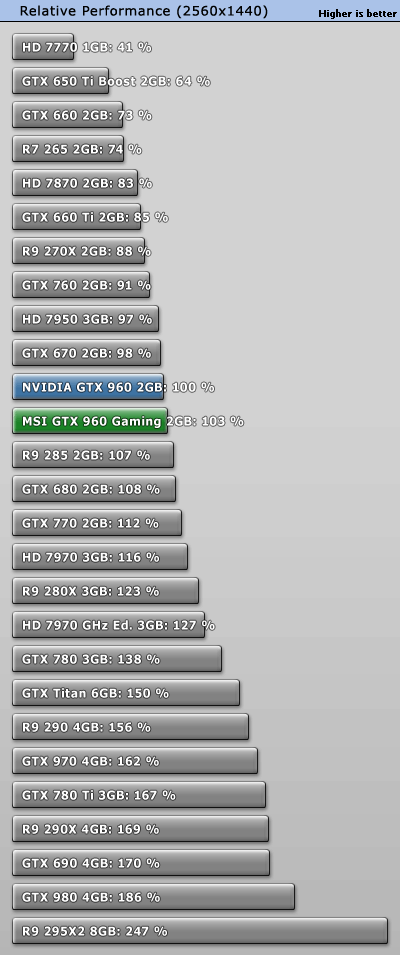This is *exactly* what I am saying. What I want AMD to get is something to compete with the current NV offerings, not only in performance, but in efficiency gains.
Did you miss all the points I made
in this post? I'll re-iterate this point -- context matters:
Videocard efficiency (An engineer's perspective) vs. Total system gaming efficiency (A gamer's perspective)
Engineer: 165W TDP 980 vs. 300W TDP 380X. If 380X is only 35% faster, it sounds absolutely horrible. R9 380X is horribly inefficient architecture/SKU. Doom and gloom. Big bonuses to NV engineers everybody!! :thumbsup::thumbsup:
PC Gamer: But wait, I am not an engineer, all I care about is my total system's efficiency in games, because well that's what I bought my card for. Architectural efficiency is fine and dandy but how does that translate to my gaming rig's overall efficiency?
So what do we get?
What if in a game the i7 4770K system with a 380X was 35% faster than an i7 4770K + a 980, and the total system power usage was 35% greater or: 290W x 1.35 = 392W?
Notice, in that case the
i7 4770K+380X system's power efficiency is just as good as the
i7 4770K+980 system's overall power efficiency.
Conclusion: From a gamer's, not an engineer's point of view, the perf/watt HAS be considered in the context of the overall system power usage relative to the performance because that is the efficiency a gamer actually experiences!
>>> If you compare perf/watt ONLY on a graphics card basis, you are comparing SKU/architectural efficiencies of the cards, not the gaming rig's efficiency. And since you can't game just on a videocard without CPU/Mobo/RAM/HDD/SSD, what do you think actually matters more? Add in the power usage of your gaming monitor too btw!
My PC is already a space heater while gaming with 2x 670s. That's fine right now in winter, but in summer....I don't want to turn the AC up. I would LOVE to pick up a single card that gets me a small perf gain and lowers my power requirements. Right now, that's a 980...which I am holding off on.
You are looking at the wrong card then. Flagship 300 series isn't about 670 SLI performance at 180W. It's about exceeding 980's performance.
If you want a card as fast as 680 SLI at ~180W, that's a 980. Get a reference blower 980 and it's a 165W card.
The flagship R9 300 is about getting as close as possible to the 500W 295X2 at 300W. You are just looking at completely different class of cards, which is why what you want out of a graphics card upgrade and what the flagship R9 300 card aims to achieve are misaligned.
Also, if you upgrade every 2.5 years, you can just get 970s today and get something faster in 2.5 years. The 4GB of VRAM is unlikely to be a major impact if you are the type who upgrades within 2-2.5 years. Alternatively, you can wait for GM200/R9 390 cards and just buy a discounted 980. No matter if you guy a GM200 or R9 390X (name?) in the summer of 2015, in 1.5 years or so a mid-range 14nm Pascal card will match their performance at 180W and make both of them look inefficient. That's just the nature of the GPU market.
If you want the most efficient gaming rig and most future-proof, the best way to achieve that is to upgrade more often. That's all I can say.








